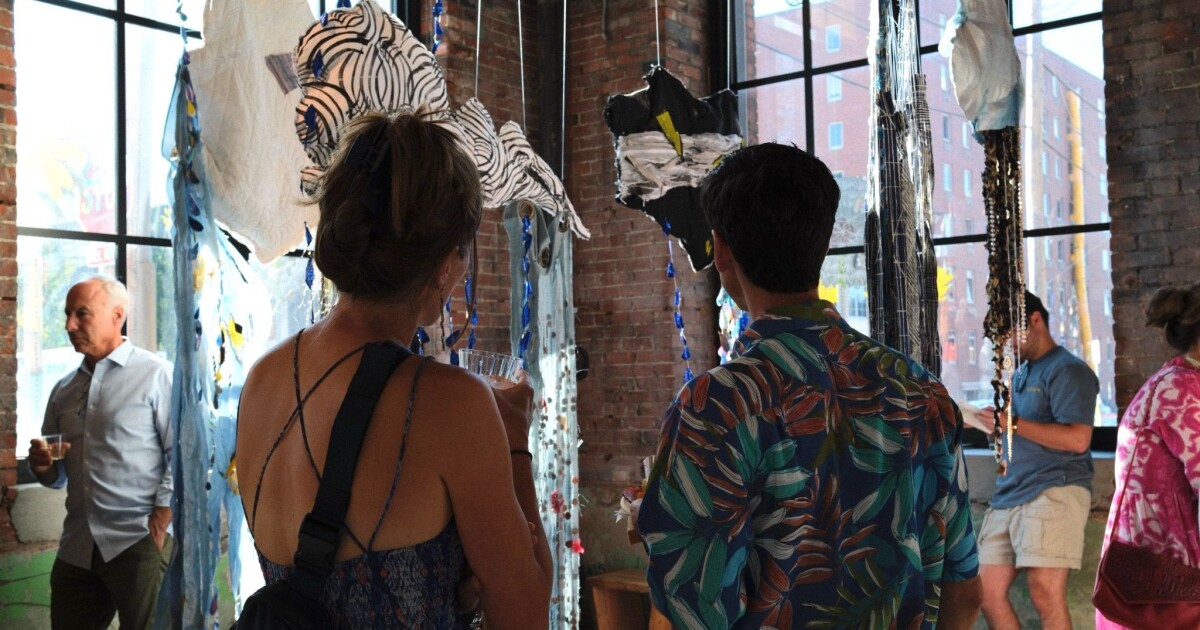This is WESA Arts, a weekly newsletter by Bill O’Driscoll providing in-depth reporting about the Pittsburgh area art scene. Sign up here to get it every Wednesday afternoon.
Strategic plans are typically of interest only within the organizations that issue them, and perhaps not always even then. Sometimes, they don’t do much more than restate a group’s existing mission; seldom do they conjure a sense of institutional reckoning.
The Greater Pittsburgh Arts Council’s new strategic plan seems like an exception. With a candor that verges on the self-excoriating, the group’s report announcing the five-year plan itemizes its past errors and seeks to chart a new course in how it serves the local arts community.
In his statement, GPAC CEO Patrick Fisher — while acknowledging that his group has done much good over the years — writes that “regardless of intentions, the Arts Council has caused harm by being inconsistent, unresponsive, or culturally inept.”

Such findings didn’t surprise him. After starting the job in June 2023, he undertook a “listening tour” that brought him to dozens of local artists’ studios and arts organizations. Much of what they told him is echoed in the new plan, full of what he calls “difficult truths” and “uncomfortable information.”
The consensus, he said, is that GPAC has lost focus, and — in trying to do too many things — it has failed to concentrate on what was most needed and what it could do best.
“Any time you try to be something to everybody, you wind up stretching your capacity too far,” he said.
Admittedly, GPAC, founded in 1995, is designed to carry out multiple functions in service to its members, who include both organizations and individual artists.
One job is to support local groups and individual artists by “re-granting” money from funders like the Pennsylvania Council on the Arts and the Allegheny Regional Asset District. (Such money makes up about one-third of GPAC’s $1.7 million budget this year, Fisher said, with most of the rest coming from local foundations and other non-governmental funders.)
Another job is to advocate for such funding in Harrisburg and beyond. The group is also known for its extensive research into the local arts scene, from regular evaluations of the economic impact of the arts to last month’s new report on racial inequities in arts funding.
So how did GPAC “harm” the arts community?
Fisher said it has sometimes been through poor planning and management of initiatives like the Disabled Artists Creative Cohort and the Black Arts Action Committee. GPAC “over-promised and under-delivered” on these underfunded attempts to increase opportunities for disabled and Black artists and left behind disappointed constituencies, he said.
Other programs that initially served a purpose failed to change as needed. One, Fisher said, was Art on the Walls, which at first addressed a very real lack of exhibition opportunities for emerging and mid-career artists. But it also kept diverting resources from more urgent projects even after other opportunities for such artists emerged, he said.
Likewise, certain grant programs for local artists ran out of money, leaving artists in the lurch.
Conclusion: “We are a very poor program administrator,” Fisher said. And that bred distrust that GPAC could help anyone.
Thankfully, GPAC has proved more effective in other roles. One of those is what Fisher called “an information hub and service provider,” putting artists and groups in touch with entities offering opportunities for exhibitions, performances, grants and residencies. It’s also seen some success with its Volunteer Lawyers for the Arts program.
So moving forward, GPAC will lean into its strengths. “We’re really gonna be serving as that connector,” said Fisher.
GPAC currently has just six employees, down from 10 this time last year. But the group didn’t want to do more hiring until the strategic plan was finalized. Fisher said the group will now beef up its membership department to facilitate those connections and also build an art-sector “eco map” to help people find resources on their own.
And it means GPAC will cut back on its own workshops on subjects like how to write an artist statement or build a portfolio, instead referring members to other groups that already do that kind of work — organizations like Shiftworks Community + Arts, Brew House Arts, BOOM Concepts and Radiant Hall.
Fisher said GPAC has sometimes leaned too much toward the larger arts groups among its members. He said it will now prioritize small and mid-sized arts groups (those with budgets under $2 million).
And the future begins with the tough language in that strategic plan.
As Fisher put it, “We felt it was really important to say about ourselves what we were hearing others say about us.”

